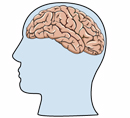QEEG Brain Mapping
 QEEG Brain Mapping is a tool to identify key areas of the brain to train for brain exercise or Neurofeedback
Training. The QEEG maps a person’s brainwave patterns while he/she is engaged in specific
tasks, such as reading, doing comprehension questions, solving mathematics problem
(addition, mental sum and problem sum), writing composition and listening to a classical
song and a pop song. The idea is to measure the EEG (brainwaves) when one is performing
a task. For children, we will discuss with the parents about which tasks they are most
concern.
QEEG Brain Mapping is a tool to identify key areas of the brain to train for brain exercise or Neurofeedback
Training. The QEEG maps a person’s brainwave patterns while he/she is engaged in specific
tasks, such as reading, doing comprehension questions, solving mathematics problem
(addition, mental sum and problem sum), writing composition and listening to a classical
song and a pop song. The idea is to measure the EEG (brainwaves) when one is performing
a task. For children, we will discuss with the parents about which tasks they are most
concern.
From the QEEG Brain Mapping, we can determine areas of the brain that function optimally, shuts
down and that are in fatigue when performing the task. By using this information, a unique
brain exercise (Neurofeedback) program can be designed.At Spectrum Learning, we will use the
QEEG analysis as a guide to derive training protocols for the brain exercise (Neurofeedback) training and for
post-training assessment. This leads to a more effective training and ensures that specific
objectives are met.
The following is what happens during QEEG:
1. Wearing the QEEG cap
QEEG cap looks similar to a swimming cap and it fits comfortably on the head. It has 20 electrodes located according to the "International 10-20 System of Electrode Montage". This electrode cap measures the electrical signals or brain waves (EEG) emitted from the brain at 19 locations across the scalp simultaneously. It is very safe as it only measures what the brain sends out. Nothing is discharged into the head.
2. Applying the QEEG gel
A special QEEG gel is applied in each electrode using a syringe. This is to establish a good contact with the scalp for accurate measurement of the EEG or brain waves.
3. Checking for contact problem and any impedance issue
The consultant will test the quality of contact from each electrode using a special meter. If the contact quality is not good, the consultant will adjust the electrodes until they get a good quality contact with the scalp.
4. Recording the brainwaves
Client will be asked to do a few tasks, each for 3-5 minutes, while the brainwaves are being recorded. The two standard tasks are maintaining opened eyes in relaxed sitting position and maintaining closed eyes in relaxed sitting position. Then various cognitive tasks will be given. The tasks given depends on the needs of the client. Examples include reading a passage, doing comprehension questions, solving mathematics problem (addition, mental sum and problem sum), writing composition, listening to a classical song and a pop song. While the client is engaging with each task, his/her brainwave patterns are recorded from the 20 sites simultaneously.
** Note 1: After the QEEG process is done, the brainwaves data will be analysed. We will then contact you to arrange for a QEEG Review. This is where we will go through the QEEG analysis with you and explain the results of the brain waves patterns captured during the Brain Mapping session. For Neurofeedback training, the protocols will be derived from the QEEG Analysis.
**Note 2: The person doing QEEG Brain Mapping is required to shampoo his/her hair just prior to coming.
This is to ensure that the contact of the scalp with the electrodes
is good and for minimal setup time (which takes about 40 minutes).

